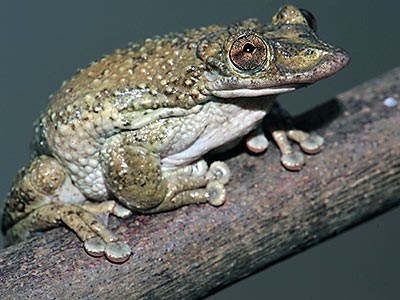Scientists have discovered new frog species in Brazil that possess venomous spikes on top of their heads. Poisonous frogs have been known for a long time including other equally poisonous amphibians like newts and salamanders that secrete venom from their skin but these are apparently the first venomous frogs that are armed with weapons that can release poison to their victims.
However, scientists have discovered how poisonous these two species of Brazilian frogs in an unfortunate circumstance where lead author of the study, Carlos Jared from the Butantan Institute in São Paulo had sustained injuries on his had from the bony spikes of the frog called Corythomantis greeningi that are native to the savannas in eastern parts of Brazil.
In this new study, researchers from the Utah State University and Instituto Butantan in São Paulo, Brazil detail how these two types of poisonous frogs called the Corythomantis greeningi and Aparasphenodon brunoi produce skin secretions that are more deadly than poisonous snakes such as pit vipers.
According to co-author of the study, biologist Edmund "Butch" Brodie, Jr., in order to create harm to other animals, a poisonous animal must possess toxins that can be ingested or inhaled by the other animal. An organism is described as venomous when it has a delivery mechanism such as fangs in vipers to release its toxins into its victims.
These two species of frogs have been known to exist in Brazilian rainforests for decades or even centuries however, scientists only know little about their biology. It was only recently discovered that these frogs apparently possess bony spikes on their heads that can emit poisonous secretions to other animals.
When co-author of the study, Carlos Jared were collecting frog specimens during this research, he accidentally touched his hand onto one of the frog's spiny heads where he immediately felt an intense and radiating pain, lasting for five hours.
Jared says that this poison would even be more effective when injected onto the mouth of an attacking predator and fortunately, the Corythomantis greeningi is the lesser evil of the two species. Scientists have calculated that one gram of the other toxic frog species, the A. brunoi, is enough to kill 300,000 mice or 80 humans.
Brodie however believes that this is unlikely for this frog to produce this much toxin since only very small amounts can be transferred from the spines to the wound, and there is no animal yet in existence that can feast and stomach these frogs, since nothing can get past those head spines.
This study is published the journal, Current Biology.



























